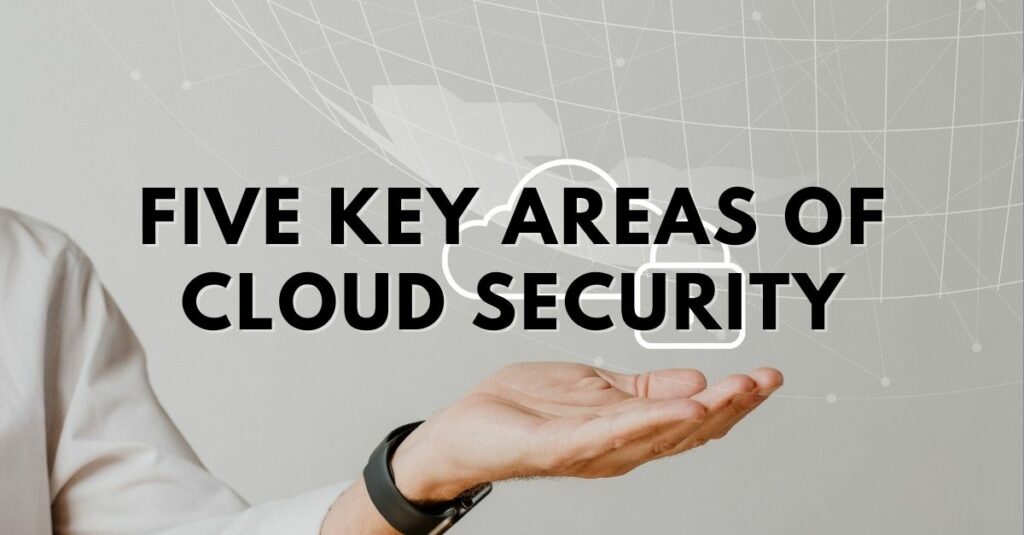What are the 5 key areas of cloud security
Concerns of cloud data breaches are a key reason that cloud adoptions hit a roadblock in companies despite an eagerness to go “cloud first”. Despite the promise and flexibility that the cloud offers, security is something that companies cannot compromise on. Cloud security expertise remains high in demand and low in supply, with most CISOs struggling to fill the skills gap in their team.
It is essential to understand the fundamental principles on which cloud security is built before cloud adoption may be implemented properly. One of the biggest mistakes that companies can make is to implement a cloud solution without much consideration to its cloud security.
Let us take a look at a few of the key areas within cloud security and how they all work together.
Visibility
It is difficult to secure what you do not have visibility on, and nowhere is this more true than cloud security.
Without proper change management, cloud infrastructure can get updated within seconds leading to a security nightmare unless proper security checks are implemented. CISOs and cybersecurity teams must monitor and get visibility on what is happening within their cloud environments before a security breach happens. This is easier said than done, as cloud workloads can be geographically dispersed, managed by different teams, and even spread across different cloud providers like AWS, GCP, and Microsoft Azure. Many companies prefer to go multi-cloud to prevent vendor lock-in, which becomes a major visibility challenge for CISOs.
One solution is to adopt Cloud-native tooling like Cloud Security Posture Management (CSPM) tools so that threats and misconfigurations can be proactively identified before they lead to a security breach. These solutions may also allow auto-remediations, enabling faster response times than possible for on-premise. In addition to threat mitigations, CISOs implementing such tools gain visibility into their single or multi-cloud environment, enabling the CISOs to make informed decisions about their cloud risk posture.
Continuous monitoring
Gaining visibility leads to the next key area, which is continuous monitoring for threats. Monitoring also helps companies to maintain compliance with regulatory standards.
The cloud lends itself to automation, and millions of events can be taking place, any one of which could be due to a potential cyber threat. Manual security response is not feasible in such an environment. A high volume of events and alerts lead to alert fatigue and critical alerts being missed out.
It is helps to have cloud monitoring solutions powered by machine learning that can make sense of these events and to detect suspicious user activity automatically.
Security by design
It is important to include security at the design stage of cloud adoption, and not to bolt on security as an afterthought. For example, companies can make use of Infrastructure as Code (IaC) templates to spin up cloud infrastructure like compute instance, databases, networks, security groups etc with certain security controls baked in from the start.
Security by design will not only make life easier for cloud administrators but lend itself to better security down the road.
Identity Management
One of the most significant changes in cloud security is how the traditional network perimeter decreases in importance. Identitiy access management becomes much more important. While network perimeter controls do not vanish entirely, security controls now focus more on validating the user and machine identities in the cloud.
Besides strong password policies and multi-factor authentication controls, other data such as location, risk score, device status etc may also be used to establish the identity. This is part of the Zero Trust model, where there is no implicit trust granted to any user or device, whether it resides within or outside the network.
Vulnerability Management
Migrating your infrastructure to the cloud does not mean that you can now completely pass the job of vulnerability management to the cloud service provider. With the shared security responsibiliy model used by all cloud service providers, the company is responsible for vulnerability management in certain portions of the cloud infrastructure (which varies depending on whether you are using IaaS, PaaS or SaaS).
The rapid speed at which cloud environments change, and the complex architectures involved (servers, containers, serverless functions etc) can make vulnerability management in the cloud challenging.
An effective cloud vulnerability management program should recognize the unique nature of cloud workloads but carry over the best practices from an on-prem vulnerability management program. Identification, severity tracking, and tracking to closure are all activities that are needed to ensure the cloud environment is not exposed to any critical vulnerabilities.
A final note : cloud security is not static
Cloud Security does not finish after security controls are implemented. As the threat landscape changes fast, cloud security implementations can fail if they are viewed as a project with a clear start and end date. Instead, companies should regularly review and improve or adjust their cloud security controls.
These areas discussed should be addressed by security controls and be made part of an overall cloud security plan to be reviewed regularly. This eases the cloud adoption process for companies, so that companies can reap the benefits of cloud.
How can InsiderSecurity help?
InsiderSecurity Cloud Security Monitor detects threats in real-time for Microsoft 365 environments. It is a simple-to-use SaaS for enterprises to monitor their data security in Microsoft 365. With its award-winning automated cybersecurity analytics and machine-learning, InsiderSecurity CSM makes sense millions of events that are occurring in Microsoft 365, easing the burden on overworked security teams. It provides an easy way to monitor your Microsoft 365 data security.
What are the 5 key areas of cloud security Read More »






